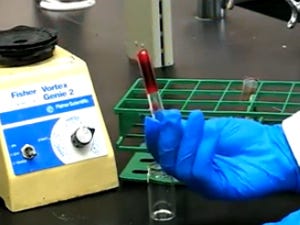Chitosan, a carbohydrate polymer extracted from chitin found in marine crustaceans, has a healthy future. The market for the material is growing at a CAGR of 16%, according to Transparency Market Research, and is projected to reach a value of $4.2 billion by 2020. New applications for the material seem to come along daily. At the American Chemical Society national meeting in Denver last week, Srinivasa R. Raghavan of the University of Maryland presented one more: a modified chitosan-based foam that can be spayed directly on wounds to prevent bleeding.
March 30, 2015
Chitosan, a carbohydrate polymer extracted from chitin found in marine crustaceans, has a healthy future. The market for the material is growing at a CAGR of 16%, according to Transparency Market Research, and is projected to reach a value of $4.2 billion by 2020. New applications for the material seem to come along daily. At the American Chemical Society national meeting in Denver last week, Srinivasa R. Raghavan of the University of Maryland presented one more: a modified chitosan-based foam that can be spayed directly on wounds to prevent bleeding.
|
Image courtesy Complex Fluids Group/UMD. |
Pressure is one of the best tools that medics on the battlefield have to fight bleeding, but they can't use it on severe wounds near organs, where it would do more harm than good, reports Chemical & Engineering News, published by the American Chemical Society (ACS).
Enter chitosan. Modified with hydrophobic moieties, the chitosan anchors blood cells into gel-like networks, essentially forming blood clots, according to Chemical & Engineering News. Researchers led by Raghavan dispersed the modified chitosan in an aqueous solution to create a fluid that can be sprayed directly onto noncompressible wounds. The foam can reduce blood loss by 90%, say researchers, who stress that it cannot repair damaged tissue but could sufficiently staunch blood loss in a patient until he or she is able to receive proper medical care.
The foam was developed by Remedium Technologies, a start-up company led by one of Raghavan's former students. It is currently being evaluated by FDA for use on noncompressible injuries.
Ankur Kulshrestha and Srini Sridharan, both of whom work in research and development for Bristol-Myers Squibb, organized the presentation in Denver for a session hosted by the ACS Polymeric Materials: Science & Engineering Division.
About the Author(s)
You May Also Like



